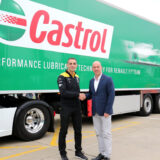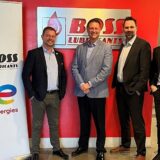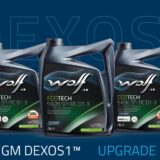“User language” for supplement category API SN Plus out for comments
The American Petroleum Institute (API) Lubricants Group, which met last week in Dearborn, Mich., U.S.A., has drafted and circulated for comments the user language for the new API SN Plus “supplement” category. The user language is important as it defines the category. It will become part of API 1509, which describes the voluntary API Engine Oil Licensing and Certification System (EOLCS) and explains to marketers how different API marks are licensed and displayed for the consumer.
API SN Plus, which was requested by original equipment manufacturers (OEMs) as a stop-gap measure to ILSAC GF-6, which is still under development, will include the Ford LSPI test to measure low-speed pre-ignition (LSPI), in addition to the other tests present in ILSAC GF-5/API SN.
The supplemental category is specifically for turbocharged gasoline direct injection (TGDi) engines and gasoline direct injection (GDI) engines, which could experience LSPI that could potentially destroy the engine. It has been established that engine oil formulation has a significant role in preventing LSPI.
However, communicating this information to the end-user could be a challenge. While some marketers use the word “For Turbo Charged Engines” on their label, API, which licenses the API Donut and the ILSAC Starburst, has to stay to script and communicate this additional information in the API Donut on the back of the bottle.
“Retailers probably won’t like this,” said Kevin Ferrick, senior manager, EOLCS, at API, “because we will have to teach people to turn the bottle around to find out if it will cover SN Plus.”
The API Donut can be anywhere in the package, but is traditionally on the back, Ferrick explains. He admits that API will have to educate end-users what this oil is all about.
API SN Plus also could be applied to a broader array of viscosity grades, not just the “Resource Conserving” viscosity grades SAE 0W-16, SAE 5W-16 SAE 0W-20, SAE 0W-30, SAE 5W-20, SAE 5W-30 and SAE 10W-30. Marketers might choose to offer SN Plus in SAE 5W-40, 10W-40, and heavier viscosity grades as well.
“Effectively, this category will allow marketers to offer a broader range of viscosity grades,” Ferrick explains.
The first licensing date for API SN Plus is still unknown. Ferrick said that issues with three critical tests need to be resolved first before a target date can be fixed. This includes finalising the Ford LSPI test. In addition, API traditionally requires a “waiting period” to allow marketers to get their products reformulated, tested and their products out the door for distribution to the different marketing channels. This waiting period has varied by category, but six months to one year would not be out of the ordinary, Ferrick said.
OEMs have requested that this supplemental category be available for licensing by January 1st, 2018, which essentially leaves less than four months to finalise the Ford LSPI test, get the base oil interchange/viscosity grade read across (BOI/VGRA) guidelines approved and run the precision matrix for this test. In addition, the severity issues for the Sequence IIIH have to be resolved and the replacement tests for the Sequence VID, which is in provisional licensing, have to be approved.













